How climate tech is like the early days of digital media (Part 1)
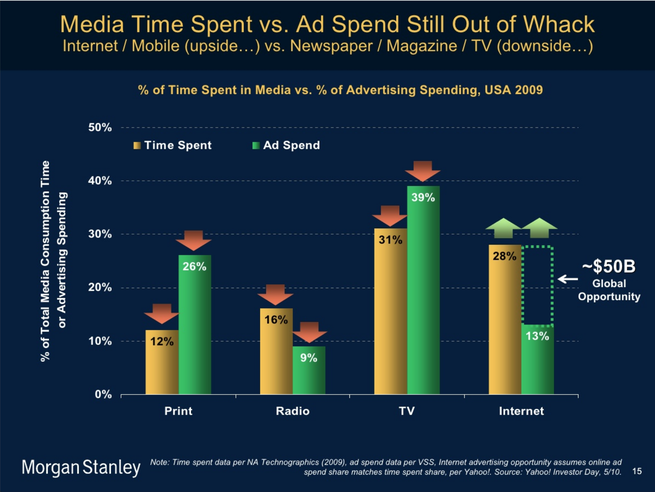
There are many parallels between climate tech in 2021 and the early days of digital media, but today I want to focus on only one point, that the future is already known.
What do I mean that the future is known? Consider this chart from analyst Mary Meeker in 2010:
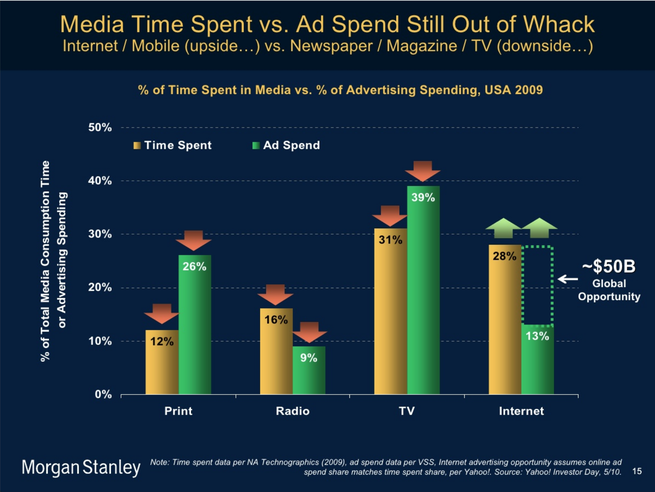
In media, money follows attention. And if you can imagine yourself in 2010, looking at this chart, you know where to place your bets. Print media commanded far more advertising revenues than its share of consumer media consumption. The Internet, on the other hand, had a $50B revenue gap. It was only a matter of time before the infamous blinky ads on MySpace were replaced by high production value spots from State Farm (but not on MySpace). The future was not only known but obvious (though how it played out wasn't as obvious).
The same can be said about climate tech today. This chart from the University of Michigan's Center of Sustainable Systems shows current sources of US GHG emissions.
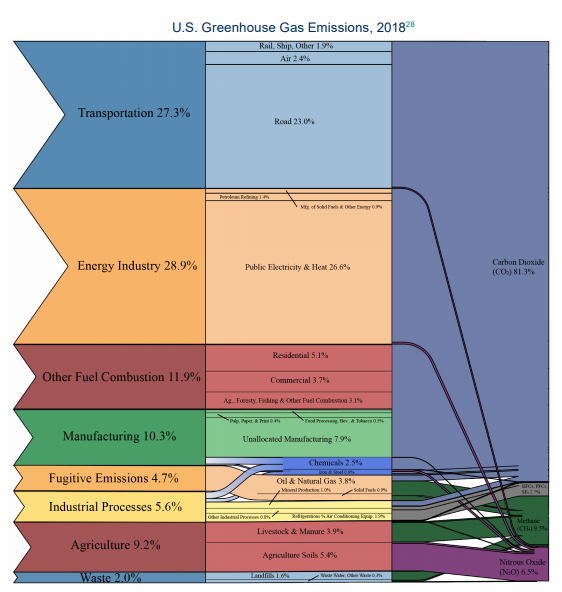
We know that to avert climate disaster, these emissions (with some exceptions) need to go to zero by 2050. We will change how we get around, how we generate electricity, and how we heat our buildings. It's both known and obvious.
The IEA offers one prediction of how we reduce those emissions. While the exact mix of measures may be wrong, it is generally accepted that these are the solutions available to us (NZE is net zero emissions, CCUS is carbon capture). Note that behavior change is the third largest mitigation activity. I'll be writing more about that in the future.
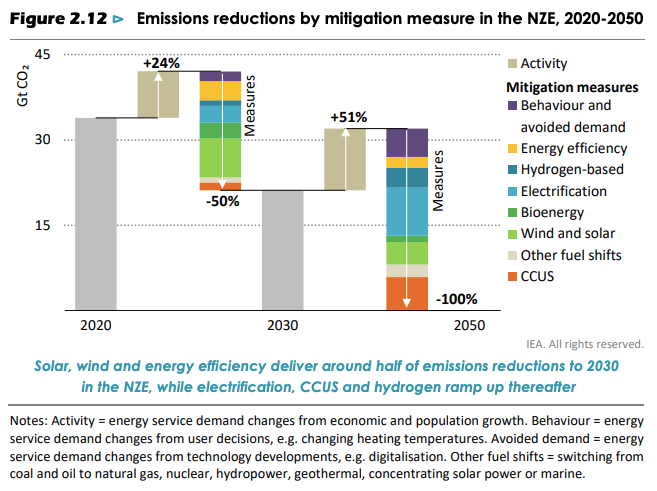
And here is the IEA's estimate of the annual investment required to reduce our emissions to zero by 2050.
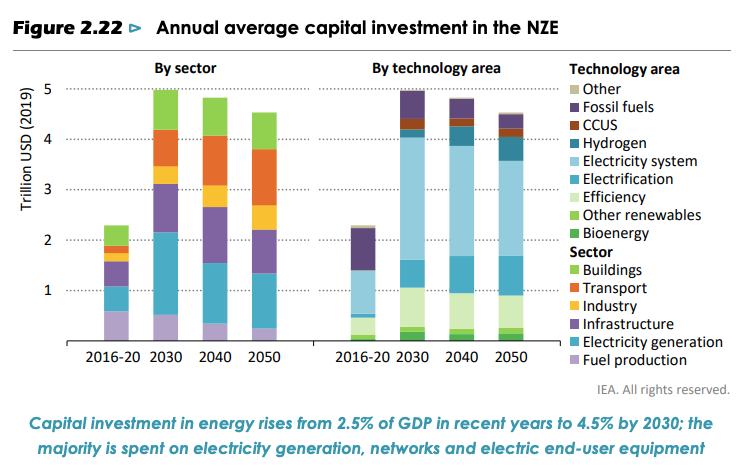
That's five trillion USD, every year, for the next decade. A view from this altitude tends to obscure how large the components are. In the transportation sector alone, the investment required is ~10% of 2020 global transportation revenue. In the US alone, the transportation sector employs 14MM people, or 10% of the workforce. Mary Meeker's $50B opportunity in internet media pales in comparison.
It's exceedingly rare to know the future in advance. When I first encountered the Web in 1994 in the UCLA engineering lab, I didn't see any indication of its future role in our everyday lives. But with climate tech, the future is both known and inevitable, even if we don't know all the details. Just as everyone in media eventually learned to speak digital, everyone with a stake in a habitable planet will soon be speaking carbon.
Read Part 2 for a dive into six specific structural characteristics shared between today's climate tech and early digital media.
Interested in hearing more? Please subscribe or follow @greenwashalert

